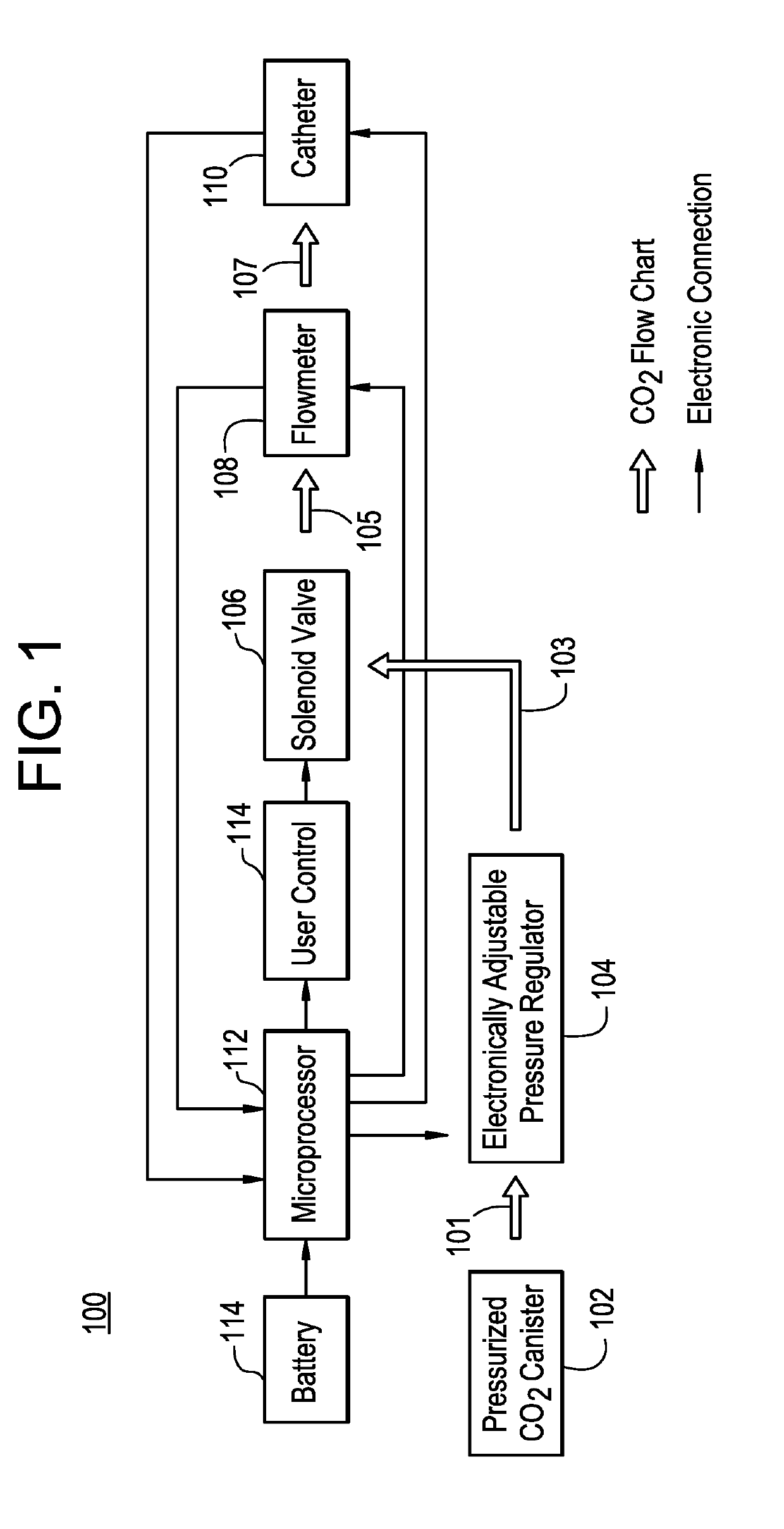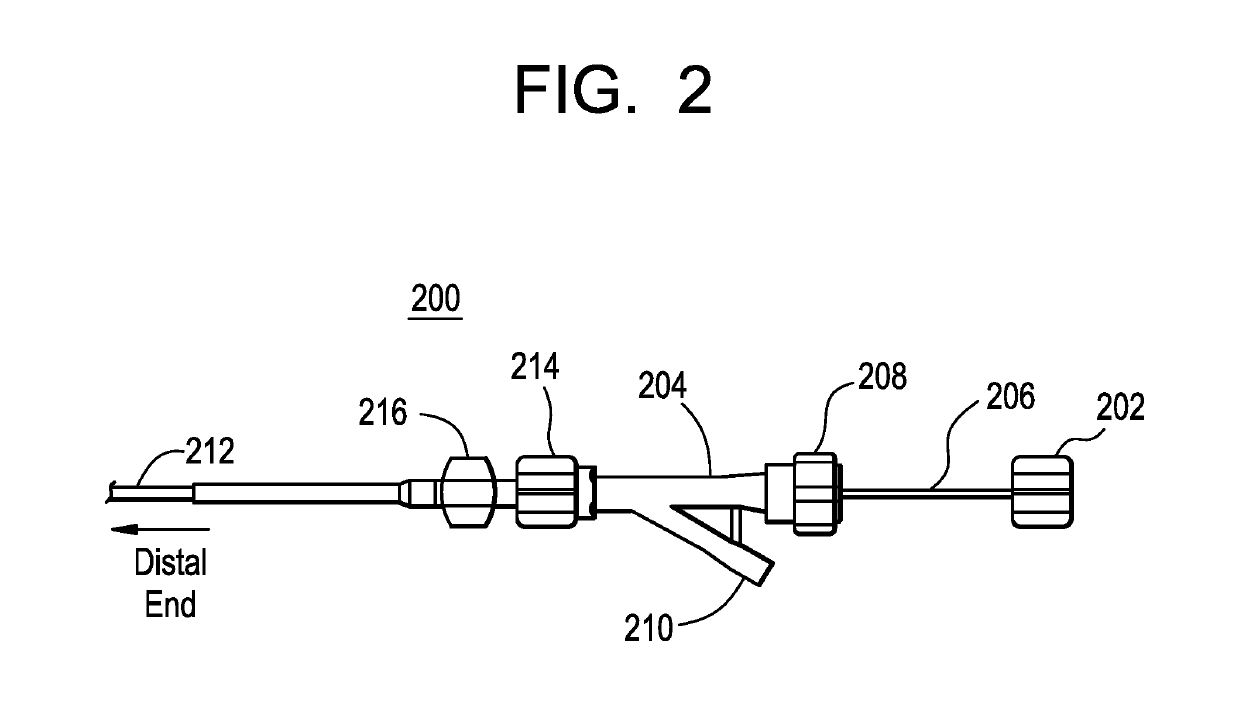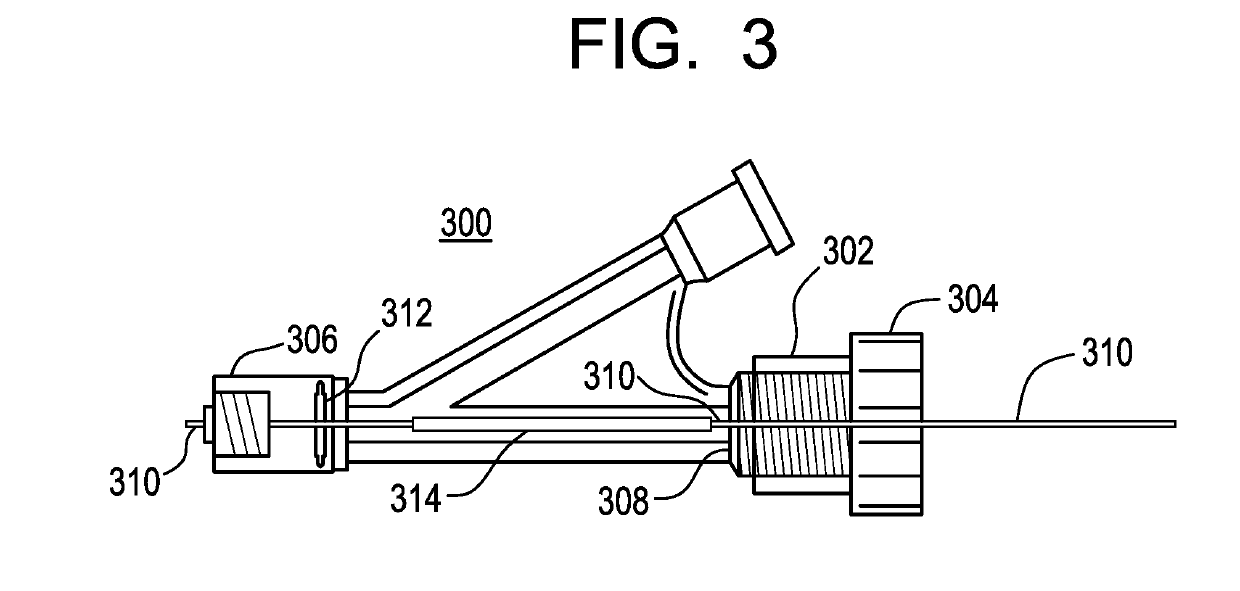System(s), method(s) and device(s) for the prevention of esophageal fistula during catheter ablation
a technology of esophageal fistula and catheter ablation, which is applied in the field of systems, methods and devices for preventing esophageal fistula formation, can solve the problems of increased risk of atrial fibrillation patients suffering stroke, heart attack, leg loss, etc., and achieves the effect of increasing volume, preventing atrial fibrillation from being injured, and increasing volum
- Summary
- Abstract
- Description
- Claims
- Application Information
AI Technical Summary
Benefits of technology
Problems solved by technology
Method used
Image
Examples
Embodiment Construction
[0024]The present invention is directed to system(s), method(s) and device(s) for preventing or minimizing the formation of an esophageal fistula or esophageal tissue damage due to unintended thermal dispersion during intra-cardiac ablation of the left atrium. In the present invention, carbon dioxide is injected or infused into the fibro-fatty tissue that separates the posterior left atrium wall from the esophagus to expand the tissue and create an insulation layer therebetween. With the carbon dioxide infused tissue insulation layer in place, catheter ablation may be utilized to create full-thickness scar tissue with minimal risk of damaging the esophagus and forming an esophageal fistula. A description of experiments given below demonstrate the feasibility and efficacy of the inventive concept.
[0025]An eight-animal study was conducted to demonstrate that carbon dioxide could be safely injected through a catheter inserted up the femoral vein to the right atrium and through the righ...
PUM
 Login to View More
Login to View More Abstract
Description
Claims
Application Information
 Login to View More
Login to View More - R&D
- Intellectual Property
- Life Sciences
- Materials
- Tech Scout
- Unparalleled Data Quality
- Higher Quality Content
- 60% Fewer Hallucinations
Browse by: Latest US Patents, China's latest patents, Technical Efficacy Thesaurus, Application Domain, Technology Topic, Popular Technical Reports.
© 2025 PatSnap. All rights reserved.Legal|Privacy policy|Modern Slavery Act Transparency Statement|Sitemap|About US| Contact US: help@patsnap.com



